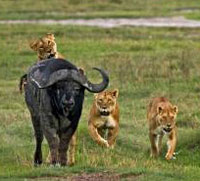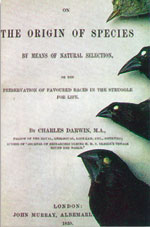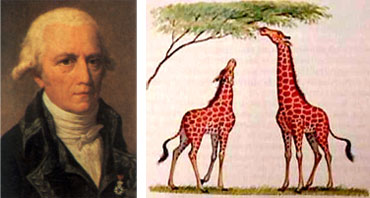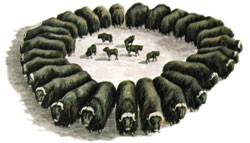Just as it is impossible for life to arise on earth by chance, so is it for species to transform themselves into other species. For no such power exists in nature. What we call nature is the sum of unconscious atoms that make up the soil, rocks, air, water, and everything else. This lifeless heap of matter has no power to transform an invertebrate creature into a fish, then make it climb on land and turn into a reptile, and then turn it into a bird and make it fly, and finally make it a human.
 | SELECTION CANNOT FORM A NEW SPECIES In nature, weak individuals are eliminated and replaced by stronger ones. This phenomenon, however, does not cause new species to emerge. Even if wild animals hunt weak and slow-moving deer for billions of years, deer will never turn into a different species. |  |
Darwin's book: The Origin of Species, By Means of Natural Selection… |
Claiming just the opposite, Darwin put forward a single concept as an "evolutionary mechanism": Natural Selection. Natural selection centres around the idea that the strongest creatures that are best fitted to their habitat will survive. For instance, in a deer herd threatened by wild animals, those that can run faster will survive. Yet certainly, this mechanism would not cause deer to evolve – it would not transform them into another living species, for instance, elephants.
 | Evolutionists commonly quote the "Moths of the Industrial Revolution" in 18th century England as an "observed example of evolution through natural selection". According to the account, around the outset of the Industrial Revolution in England, the colour of the tree barks around Manchester was quite light. Since dark-coloured moths resting on those trees could readily be noticed, they fell easy prey to the birds and therefore, were rare. Yet when the barks of the trees darkened as a result of pollution caused by the industrial revolution, this time the light-coloured moths became the most hunted and the number of dark-coloured moths increased. This is not an example of "evolution", because natural selection did not give rise to a species that did not exist in nature earlier. Dark-coloured moths were already extant before the industrial revolution. Here, we see the moths collected by a moth collector before and after the industrial revolution. There is only a shift in the number of existing moth species. Moths did not acquire a new organ or feature to lead to a "change in their species". Moth collection showing that both darkcoloured and light-coloured moths lived in the region before the industrial revolution. |
The Story of Industrial Melanism Left: Before The Revolution Dark and light coloured moths already existed both before and after the industrial revolution. A new moth species did not emerge. Moth collection showing that both dark-coloured and light-coloured moths lived in the region before the industrial revolution.
|
There is not a single shred of observational evidence showing that natural selection has ever caused any living thing to evolve. A noted evolutionist, British paleontologist Colin Patterson confesses this fact:
 | THE EFFECT OF LAMARCK: When Darwin suggested that "natural selection causes species to evolve", he was inspired by Lamarck's hypothesis about the "transfer of acquired traits". According to Lamarck, the necks of giraffes extended as they tried to reach higher branches for food. In the 20th century, however, it was revealed that Lamarckism is a fallacy. |
No one has ever produced a species by mechanisms of natural selection. No one has ever got near it and most of the current argument in neo-Darwinism is about this question.17
 | SACRIFICE IN ANIMALS
Darwin's theory of evolution by means of natural selection rested on the supposition that all living things fight a fierce struggle for survival. Observations however showed that animal communities display great examples of self-sacrifice and cooperation. The wild oxen that line up in a circle to protect their young are only one of the numerous instances of self-sacrifice in nature. |